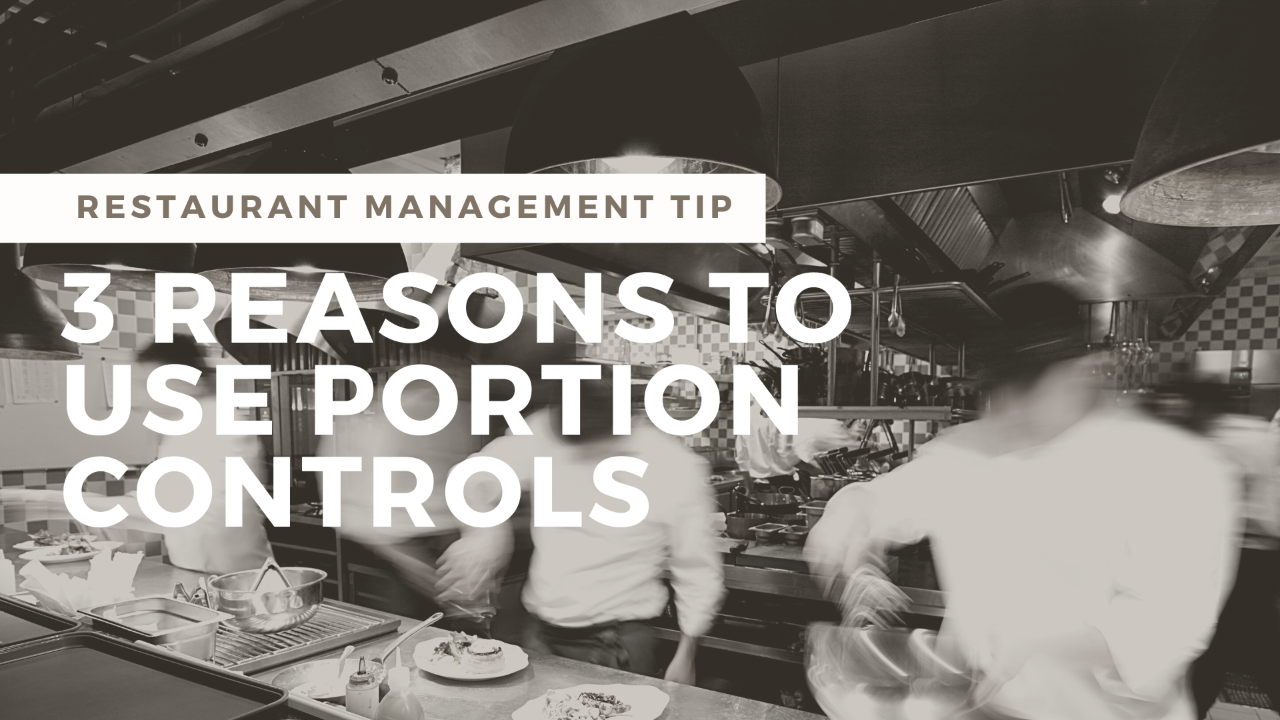Top 3 Reasons to Use Portion Controls in Your Restaurant Kitchen

Are you tired of high food cost? Do you wish every cook made your food items the same way each and every shift no matter who's cooking? Have you ever rehired a cook and heard them say, “That's not the way we used to make this”? What kind of impact does an inconsistent kitchen have on your sales? The fear behind all of these questions can be tracked back to consistency in the kitchen. To address that, here are my top three reasons you need to implement and use portion controls in your kitchen.
First of all, I get it. Many restaurants don't want to slow their ticket times down with a bunch of portion controls on the line. I hope to change that thought process right now with my top three reasons you need portion controls on your kitchen's line.
#3 Portion controls make training line cooks easier. For example, rather than telling someone to use 2 ounces and trust they know how much that is, it's so much easier to put a two ounce ladle in that sauce to make sure it’s one correctly every time. It's so much easier to get a cup that fills to the specific volume you need, or to use a scale with a bowl on it where you can throw fries in it and see it weighs 5 ounces. You're making training easier because instead of having to eyeball or mentally calculate things, there is no thinking. It becomes automatic and just the way things are done.
#2 Portion controls lower your food costs because your menu items follow the actual recipe costing cards. You’re not over using or underusing product. Instead, you use what the recipe says it is and this gets you closer to hitting your target food cost.
#1 Portion controls lead to increased sales because customers get consistently made food. That’s why chain restaurants do so well: consistency. There are many chain restaurants out there that are good and there's many more that are awful, but most of them have lines of people behind them. Why, if they suck, would they have lines of people? Because they suck the same way every single day and it's that consistency that drives customers. They go where they can get the same dish every time. They won’t get one that is too large or too small one day, or too salty. Customers who get the same item every single time the way they expect it will come back more and more often. Implementing portion controls on the line ensures the guest has a consistent experience driving customers back over and over again. increasing your sales.
Something this simple can have such a huge impact on your food cost. Think about this for example: if you calculate your ideal food cost that's based on actual up-to-date accurate recipe costing cards, and add to it your product mix from your point of sale system, that's going to tell you what your food cost should be in your restaurant ideally. That’s for a perfect restaurant, no waste, no theft, no spoilage – again, a perfect restaurant, which does not exist. That’s why we’re talking about ideals. Let's say you take that product mix for your POS system, your accurate, up-to-date recipe costing cards and what you sell it for, and you come up with your ideal food cost of 30%. A rock star chef or kitchen manager is going to be 1.5 to two points above that ideal.
With an ideal food cost at 30%, let's say your kitchen over portions because you’re not using portion controls. This can be as little as 10% over portioning French fries, 10% more shredded cheese or lettuce. You can’t see that 10%. You might see 25% over portioning, but you’re not going to see 10%. This activity takes that 30% food cost and jacks it up three points to 33%. If your restaurant does $1 million a year in food sales alone – forget about bottle beer, draft beer, wine, liquor, or anything else – $1 million in food sales a year that 3% of just a little bit over portioning that would equate to $30,000 a year in waste.
If you need a reason to implement portion controls in your kitchen, I hope that was it.
Be sure to visit my YouTube channel for more helpful restaurant management video tips.




